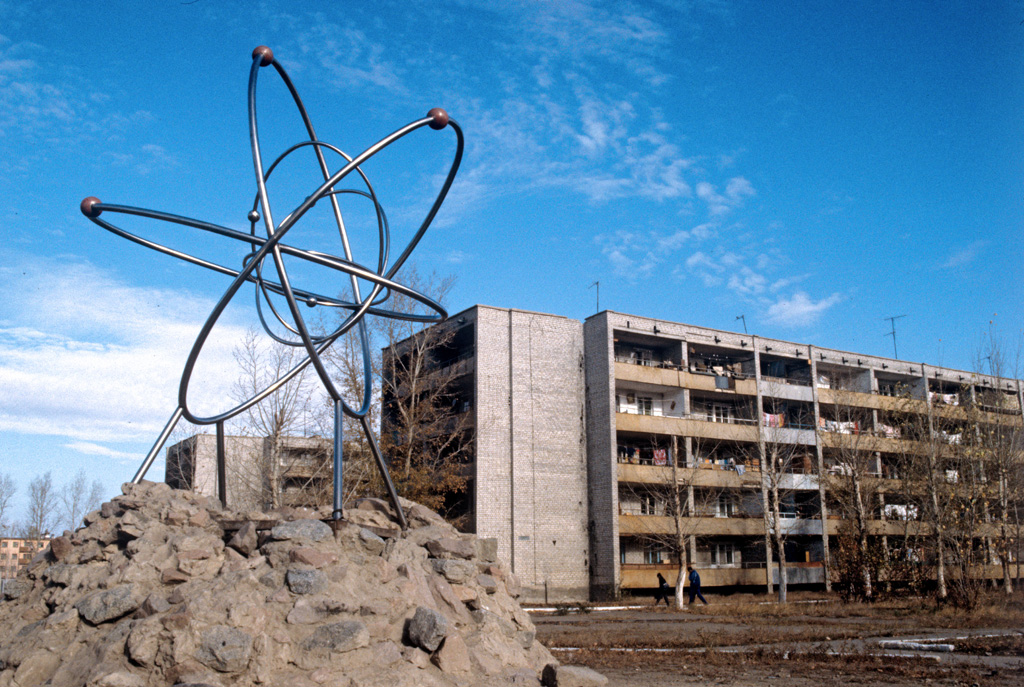As officials from North and South Korea get ready to hold an historic summit next Friday, South Korean Foreign Minister Kang Kyung-wha has said Seoul is in a need of Kazakhstan’s support for the denuclearization of the Korean peninsula.
“We will continue to hope for the support of Kazakhstan, a member of the [United Nations] Security Council,” Kang said on Tuesday, following a meeting with her Kazakhstani counterpart Kairat Abdrakhmanov.
“Kazakhstan is a country that has voluntarily abandoned the nuclear arsenal and chose the path of peace. We are trying to persuade North Korea to choose the same path that Kazakhstan has chosen,” she added.
While the two Koreas are technically still at war, there has been an easing of tensions over the past several months, especially since the Olympic Winter Games held in PyeongChang in the south in February.
Officials in Seoul believe the upcoming inter-Korean summit to be held at the border truce village of Panmunjom, as well as a highly-anticipated meeting between U.S. President Donald Trump and North Korean leader Kim Jong-un, may give momentum to the nuclear settlement.
North Korea’s nuclear program has been implemented since the mid-1960s. In February 2005, North Korea’s officials publicly acknowledged for the first time that the country has nuclear weapons, while in 2006 they claimed first nuclear test. The situation worsened after KCNA, country’s official news agency announced in 2017 that the country test-fired a new type of intercontinental ballistic missile that is capable of carrying a “super-large heavy (nuclear) warhead”.
Once a part of the Soviet Union, Kazakhstan was left with its largest repository of nuclear material in the early 1990s. It was once the largest test site for Soviet nuclear weapons.
While North Korea was ramping up its nuclear program, Kazakhstan’s President Nursultan Nazarbayev renounced nuclear defense capabilities and closed down the Semipalatinsk nuclear test site, better known as “The Polygon,” after the collapse of the USSR in 1991.
After abandoning nuclear weapons, Kazakhstan was able to equip the army and attract foreign investment, according to Nazarbayev.
“We made a well-considered decision to get rid of these missiles, change long-range bombers to military aircraft and equipment, and sell fuel needed for nuclear warheads to get money for the state and get investments,” he said in an interview with the Japanese Broadcasting Corporation NHK in 2016.
After closing down Semipalatinsk, Astana joined Moscow, Minsk, and Kiev in 1992 to sign the Strategic Arms Reduction Treaty. Ttwo years later the American and Kazakhstani governments launched covert project dubbed Sapphire. With an aim to reduce the threat of nuclear proliferation, the U.S. helped remove nearly 600 kilograms (1,100 lbs) of weapons-grade enriched uranium placed in a warehouse at the Ulba Metallurgical Plant outside Ust-Kamenogorsk.
Energy-rich Kazakhstan is a staunch supporter of global nonproliferation efforts. It remains a member of the Nuclear Non-Proliferation Treaty, the Comprehensive Test Ban Treaty and the Central Asian Nuclear Weapon Free Zone, to promote nuclear disarmament, non-proliferation, as well as control, accounting and physical security of nuclear material.
Ariel Cohen, Nonresident Senior Fellow at the Atlantic Council believes the lessons of Kazakhstan’s nuclear trade-off are particularly valuable for Korean crisis management, and the eventual disarmament of North Korea.
“Kazakhstan can be a positive model for the North Koreans and others on how to trade in a nuclear arsenal for a massive investment and technical assistance package from the World Bank, the Asian Development Bank, as well as the Asian Infrastructure Development Bank, as well as security guarantees from the UN Security Council five permanent members,” he wrote in his article titled, “A Kazakhstan Model for North Korea Nuclear Settlement.”







 President Ilham Aliyev shed light on the evolving contours of the peace process with Armenia during an international conference in Baku this week. ...
President Ilham Aliyev shed light on the evolving contours of the peace process with Armenia during an international conference in Baku this week. ...
 Azerbaijan and Armenia started the process of demarcation of their border on Tuesday, with the installation of the first border markers based on ge...
Azerbaijan and Armenia started the process of demarcation of their border on Tuesday, with the installation of the first border markers based on ge...
 President Aliyev emphasized the critical role of the North-South Transport Corridor in fostering transport cooperation between Azerbaijan and Russi...
President Aliyev emphasized the critical role of the North-South Transport Corridor in fostering transport cooperation between Azerbaijan and Russi...
 Russian Foreign Minister Sergei Lavrov has reasserted that Moscow has no intentions to stop the fighting in Ukraine, even if peace talks commence.
Russian Foreign Minister Sergei Lavrov has reasserted that Moscow has no intentions to stop the fighting in Ukraine, even if peace talks commence.
 Iran and Pakistan have signed eight cooperation documents in various fields, and agreed to strengthen ties to fight terrorism in the region.
Iran and Pakistan have signed eight cooperation documents in various fields, and agreed to strengthen ties to fight terrorism in the region.



